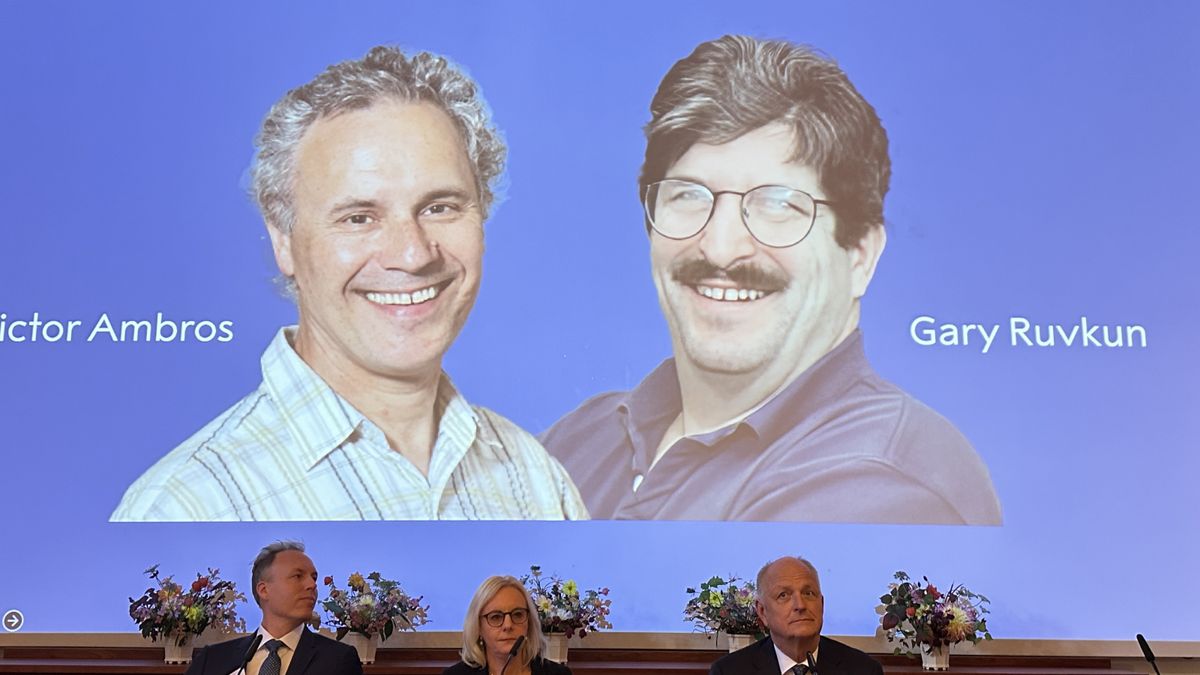RNA, a molecular cousin of DNA, was thrust into the spotlight as the basis of the world’s first-ever COVID-19 vaccines. Two key developers of the tech behind the shots won a Nobel prize for their efforts in 2023.
Now, one of those Nobel laureates — Dr. Drew Weissman of the University of Pennsylvania Perelman School of Medicine — aims to catapult RNA research to new heights. He’s helping to launch a new RNA research hub that will use artificial intelligence to help train scientists who are new to the field, guide their experiments and add their results back into the algorithm, creating a feedback loop.
Called the Artificial Intelligence-driven RNA Foundry (AIRFoundry), the National Science Foundation-funded center aims to speed innovation in the RNA field, fueling advances in medicine and many other scientific disciplines.
Live Science spoke with Weissman and Daeyeon Lee, the AIRFoundry’s director, about the new research center and the future of RNA across the sciences. Lee is also a co-founder of InfiniFluidics, a startup working with the foundry to develop the vessels that deliver RNA into cells, called lipid nanoparticles (LNPs).
Related: Scientists just discovered a new way cells control their genes
Nicoletta Lanese: Our readers are familiar with messenger RNA (mRNA) vaccines — what other medical applications are you envisioning for the future of RNA?
Dr. Drew Weissman: First, the purpose of the bio foundry is to go beyond medical therapeutics. It’s to make RNA available to many other types of science … Everything from teaching bacteria how to eat oil or plastics, to teaching plants how to avoid fungus — all of those things that don’t fit into NIH’s [National Institutes of Health] usual medical therapeutics.
From a medical point of view, what we and others are working on are gene therapies with RNA. Working on medical therapeutics, so using RNA to treat heart attacks or strokes or arthritis or dermatologic diseases, to treat autoimmune diseases. There are probably thousands of potential therapeutics that RNA can be used for, beyond just vaccines.
NL: That metaphor you used is interesting — to use RNA to “teach” an organism to do something. Could you explain what the RNA is actually doing in cells?
DW: RNA to me is the middleman. … Our DNA encodes every protein [enabling] every function that keeps our cells alive and keeps our bodies alive. So the DNA is the library that keeps every single code. The mRNA is used when you want to make a protein from one of those codes. And the cell makes an RNA that copies the [DNA] code for a particular protein; that mRNA then travels to a machine, known as a ribosome, that reads the code and makes proteins based on that code.
What the RNA [COVID] vaccines do is they give the code for the spike protein of the COVID-19 virus. The body then recognizes that as a foreign protein and makes an immune response that preps the body to fight off the virus when it sees it. But the RNA can also encode gene-editing machinery that can make proteins that change mutations in our chromosomes, in our genome. Or it can make proteins that are [lacking due to a gene mutation], or it can make therapeutic proteins to treat inflammation, to treat heart attacks, to treat all sorts of different things.
Any protein that you can imagine, it can deliver.
NL: Could you explain how you’re using AI to innovate with both the RNA and the delivery systems that get the RNA into cells?
Daeyeon Lee: AI has multiple roles here. We are imagining that we want RNA to become a tool for everyone who’s doing science … in 20 years, it will be a common tool. But right now, for people who have not been doing RNA research actively, it’s very hard to break into this area.
So AI will sort of guide the user. “This is the literature that you want to learn, these are the experiments you want to be running. These are perhaps the RNAs or delivery vehicles that you wanna start your experiments with.” It’s not just providing materials but guiding the user, augmenting the human expertise. … And once the experiments are done, they come back to the AI and feed it the results, so that the AI learns and makes the next predictions, next suggestions and so forth.
NL: So the AI is almost a tool and a collaborator, in a way?
DL: Yes, absolutely.
NL: In terms of RNA data that’s available to feed to the AI now, are there areas that are particularly well-researched and others that still have gaps?
DL: In terms which area we’re best positioned to impact, if I’m not mistaken, a lot of Drew’s data is on animals, so one area we’re very interested in going into is animal health. Vaccines for livestock, for example.
DW: I can give you an example: You’ve probably heard about the avian influenza that’s been circulating and is in cows now. We’ve been working for a while on making vaccines to vaccinate both cows and chickens. And we made the cow vaccine using our usual technology, and we immunized cows and it works great. [Editor’s note: This vaccine is still experimental and is not yet in use.]
We tried that in birds and we got no response. So we went back and we theorized, “Well, maybe we need to change all of the [RNA] structures.” And we did it based on just reading the literature and guessing.
The hope is, in the future, the AI will say, “Chicken coding sequences are very different than mammals’ or humans’ — why don’t you try these?” So instead of us having to make 50 RNAs to find one or two that work, the AI might give us five. [The idea is to have AI narrow down which RNA sequences are most likely to succeed at the task at hand, reducing the need for scientists to physically make and test out many different options.]
Related: New mRNA therapy shows promise in treating ‘ultrarare’ inherited disease
NL: Can you give a road map of what you’re working toward in the upcoming five years, and then in the longer term?
DW: So we’re not starting from scratch. We’ve been running an RNA core for probably 20 years. … The point of the biofoundry is now to incorporate AI into that.
We’ve got a leg up — we’ve got the mRNA production, we’ve got the LNP production. Six months to two years, would be my guess, for the AI to be fully integrated. From there on, it’s just the AI learning and the AI expanding what it can do.
DL: I think within one or two years, I think we’ll have the first version of AI that we’ll be interacting with — mostly internal researchers [at first], because we want it to be a robust system once we open it up to the external users.
NL: As this helps scientists expand the uses of RNA, do you expect any safety or regulatory issues to arise from that?
DW: The biggest issue — and we’ve been dealing in this for a long time — is gain of function. That’s where you’re adding a new activity or function to a potential pathogen. The NIH has very strict rules that control gain of function research, so that the AI is going to be trained to recognize that. That’s one of the incredibly critical things to do.
Beyond that, the regulatory [angle] is really a massive subject, because there’s so many different fields that you’re talking about, and so many different elements of the U.S. and other governments. So it will be involved.
NL: So it sounds like you could incorporate regulatory guidelines into the AI itself?
DL: Absolutely. And based on my understanding, there are layers of protection around this. … So hopefully, with these layers of different flagging systems, you’d be able to take out what can potentially be problematic in the environment or in animals or in other living organisms.
NL: Is there anything else about the AIRFoundry you’d like to highlight?
DW: I’ll just mention that the biofoundry is a U.S.-based institution that will service the world.
The RNA institute is also involved in developing … RNA research development and full-scale production across the world in low- and middle-income countries, making this a democratized technology that’s available to the entire world. The biofoundry is going to help in doing that by taking people from labs around the world, bringing them to Penn and training them — how to make RNA, how to make LNPs, how to design vaccines, how to design therapeutic protein, or other protein delivery.
DL: NSF puts a lot of effort into education, training and outreach, and that’s going to be a huge component of our biofoundry, reaching out to communities that didn’t have access to this technology. In the end, as an educator, I think the most important product from the biofoundry — I mean, there will be the knowledge, there will be the people that are using the high-quality products that we will be making in the AI. But [the most important product] will be the scholars that we generate. It will be the new cadre of scientists that have been trained in AI, RNA and lipid nanoparticles.
They will be the leaders of the field. I think that’s going to be what really sets us apart from other entities that may be trying to do something similar.
Ever wonder why some people build muscle more easily than others or why freckles come out in the sun? Send us your questions about how the human body works to [email protected] with the subject line “Health Desk Q,” and you may see your question answered on the website!















